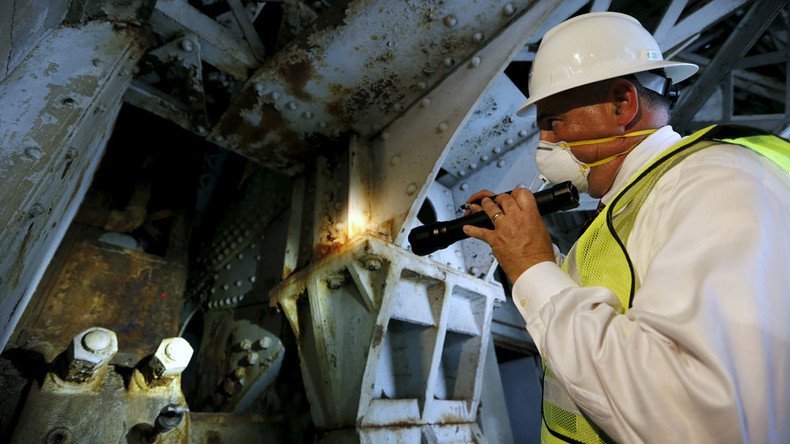Extra $1.44 trillion needed to rectify US infrastructure problems

Small things can make all the difference, but so can $3.32 trillion – the amount required by the American Society of Civil Engineers to rectify the US’ major infrastructure weaknesses. Even worse, ignoring the problem will only make it more expensive.
The American Society of Civil Engineers (ASCE) has released a study and an estimate revealing how expensive and expansive the crumbling infrastructure problems are in the US. ASCE found that for all the repairs required between 2016 and 2025, the US has funded only $1.88 trillion out of the required $3.32 trillion, Fortune reported.
House committee holds hearing on modernizing US nuclear infrastructurehttps://t.co/sNUk8m6UNcpic.twitter.com/rJkEYovNt4
— RT America (@RT_America) April 30, 2016
Ignoring the problem won’t help, either. ASCE also found that the current gap between the price tag and funding could cost the US 2.5 million jobs and a $4 trillion loss in gross domestic product. The ASCE estimates that the cost will run as high as $3,100 in annual personal disposable income.
That is only the beginning of potential problems.
“Prices will increase if surface transportation systems worsen, ports, airports and inland waterways become outdated or congested, and if water, waste-water and electricity infrastructure systems deteriorate or fail to keep up with changing demand,” the study titled “Failure to Act” says.
The extent of the deficiencies is dependent on the region, according to the study. It found that commuters in the Far West (Hawaii, California, Nevada, Washington and Oregon) spent 53 percent of their commutes driving on inadequate pavement.
Sex-for-repairs scheme: $8 million settlement reached in Baltimore public housing casehttps://t.co/HIguIuWxK2pic.twitter.com/WHQ2Ks64hE
— RT America (@RT_America) January 8, 2016
The report found two problems with the infrastructure in the US. The first is that there is not enough money going towards maintaining, replacing or repairing current infrastructure. The second is that the US will need additional infrastructure to support its ever growing population.
Problems with infrastructure can be brushed aside, but the study found that it is already causing problems for the everyday American.
According to the study, “the total hours of highway congestion delay in the top 50 metro areas has grown 36 percent.”
Flint, Michigan’s water crisis brought infrastructure weaknesses to the public’s attention in 2015. While many were appalled that drinking water in the US would contain lead, the problem goes much deeper.
The study found that the delivery of water in the US “is decentralized and strained,” with 54,000 water systems serving 264 million people. If a solution is not found by 2020, the predicted water system deficits will cost an estimated $84 billion.
With the US population growing every day, it remains to be seen how the country will sustain its population.












